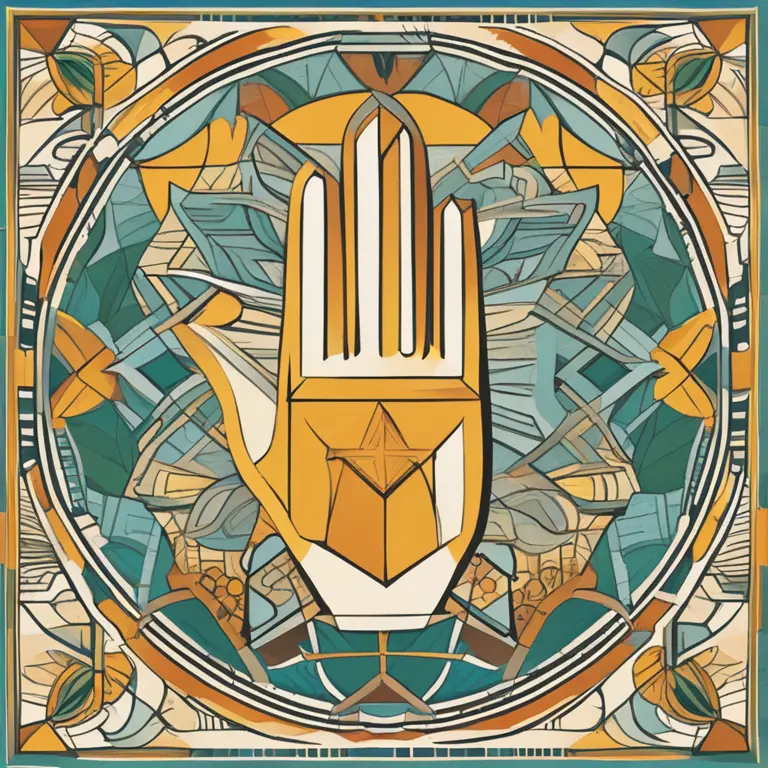
The Significance of the Non-Dominant Hand in Palmistry
Delve into the roles and meanings behind the non-dominant hand in palmistry, revealing personal traits and potential.
article by Nora Pennington
The Basics of Palmistry
Palmistry, or chiromancy, is an ancient practice that interprets the lines, shapes, and patterns on the hands to reflect personality traits and life paths. While the dominant hand is often seen as the "active" hand, representing the conscious mind and outward personality, the non-dominant hand holds its unique significance. This hand is considered to be more reflective of the subconscious, internal influences, and potential. Reading the non-dominant hand can provide insights into one's innate characteristics and unexploited talents.

The Non-Dominant Hand's Narrative
In palmistry, the non-dominant hand is traditionally associated with inherited traits and potentials. It can be seen as a rough draft of an individual's life, offering a glimpse into their raw qualities and instinctual responses. It is believed that this hand provides information about the personal challenges and lessons that one is meant to face, as well as latent abilities waiting to be awakened or developed throughout one's lifetime.

Divergence Between Both Hands
An interesting aspect of palmistry is noting the divergence between the dominant and non-dominant hands. As one progresses through life, the lines and features on the dominant hand might change, reflecting personal growth, decisions, and achievements. Comparing both hands can offer insights into how someone has evolved over time and whether they've tapped into the potential outlined in their non-dominant hand.

Key Lines and Their Interpretations
Key lines, such as the heart, head, and life lines, can appear differently on the non-dominant hand. For example, a deep and clear heart line on the non-dominant hand might suggest a person's capacity for profound emotional experiences, while a less pronounced line on the dominant hand could indicate a more cautious approach to expressing feelings. Similarly, variations in head and life lines can denote innate mental faculties and life forces yet to be fully realized or expressed.

Mounts and Fingers
In palmistry, mounts—the fleshy pads on the palm—and fingers carry their separate meanings. The mounts on the non-dominant hand can hint at underlying personality traits that may not be immediately apparent but influence one's reactions and preferences. Similarly, the length and shape of the fingers on the non-dominant hand can reveal much about an individual's unexpressed talents or inclinations.
The Role of Flexibility and Change
It's important to acknowledge that while the non-dominant hand offers a blueprint of potential, it is not a fixed fate. The hands are dynamic and demonstrate the individual's capacity for change and growth. Understanding the non-dominant hand can essentially become a tool for self-awareness, guiding personal development by highlighting areas that may benefit from attention and nurturing.
Modern Palmistry Practice
As we move into 2024 and beyond, the practice of palmistry continues to evolve with new interpretations and methodologies. However, the fundamental interest in the non-dominant hand as a source of intrinsic knowledge remains steadfast. Modern palmists integrate traditional techniques with contemporary psychological insights, providing a more nuanced and holistic approach to the individual's journey and potential.
Published: 2/1/2024
Modified: 2/1/2024
More predictions
Come back here soon to learn more about yourself and your future


The Art of Palmistry: Discover Your Lines' Secrets
Delve into the ancient tradition of palmistry to decode the story written in the lines of your hands.


Mastering Palmistry: A Guide to Hand Analysis
Delve into the art of palmistry and understand what the lines on your hand can reveal about your personality, future, and fate.


The Palm's Path to Prosperity: Interpreting the Success Line
Uncover the mysteries of the palmistry success line and learn how it may influence your journey towards achieving your goals and aspirations.